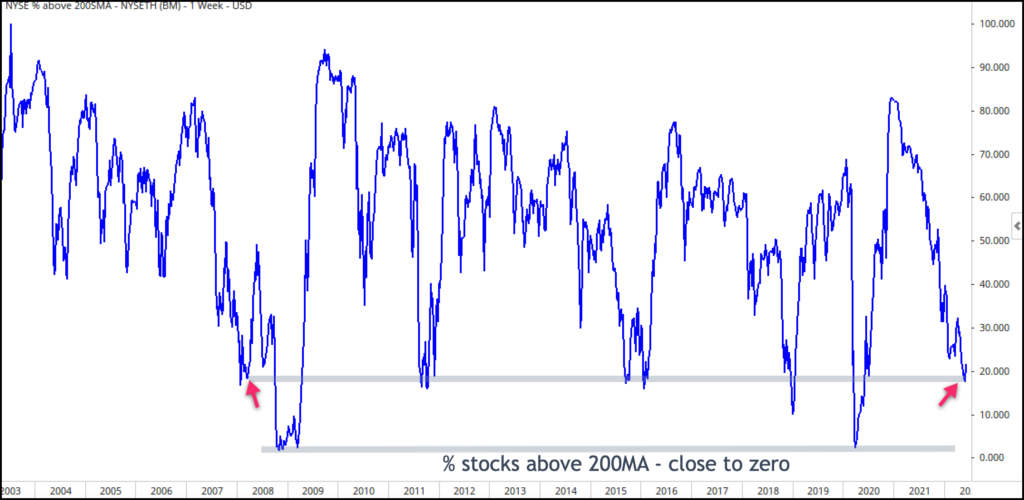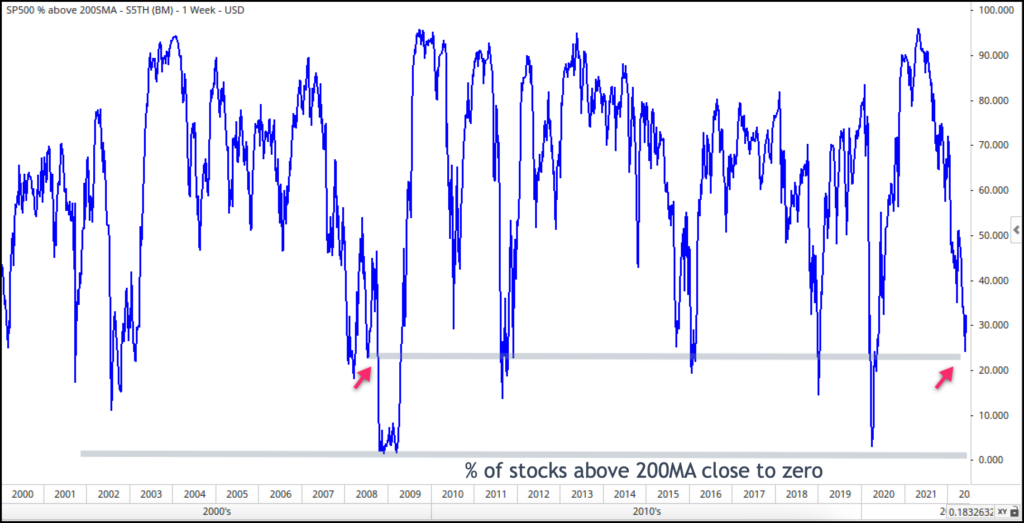Related Blogs
May 31, 2022 | Avalon Team
 I’ve been around long enough to have navigated through my share of Bear Markets. I was first rudely introduced to the Bear during the infamous Tech-Wreck.
I’ve been around long enough to have navigated through my share of Bear Markets. I was first rudely introduced to the Bear during the infamous Tech-Wreck.
And I can tell you from personal experience, that it was quite a learning experience – an expensive one at that.
But maybe those are the best lessons…
There are a handful of important lessons I’ve learned during Bear Markets that are applicable in most markets, and some are useful in today’s Bear Market rally.
Take this lesson for example: Remember to rely on short-term data when making short-term decisions and long-term data when making long-term decisions.
Seems easy enough, right?
That is until you’re in a market like this one and you get caught up in the headlines, the emotion, and the inevitable FOMO.
Maybe you’re looking at the rally in the indexes and feeling that surge of adrenaline – indexes rolling, up 5%-6% over the last 5 sessions.
Or maybe you’re like the investor I spoke with this morning, who’s been watching the 8.5% surge in the Consumer Discretionary sector (via XLY) over the last 5 trading sessions and is convinced it’s a sign.
It’s a sign alright – that traders are covering their short positions and protecting fat profits when they bet against discretionaries!
But it isn’t a sign of a bottom.
Don’t tell me it can’t happen to you…
If you’re human, FOMO can happen. It’s in our DNA, and trading is easier when we accept that.
My advice? Step back from the monitor for a minute and remember this about Bear Market cycles…
There are three things that happen in every Bear Market:
- First, you go through Disbelief. “Nah, it’s totally not a Bear Market… it’s just a pullback. Let’s buy on the dip.” Then after that proves to be costly, you move to the next phase…
- Then, Acceptance. “Hmm, okay… Maybe this is a Bear Market.”
- And last, but not least, comes Despondence. “OMG! Stocks are literally never going to go up again. Sell everything, I have to protect what I have.”
Disbelief. Acceptance. Despondence.
I would suggest, based on recent conversations with investors, that most are in the Acceptance phase now.
What I am not seeing and hearing are signs of Despondence – the “don’t-ever-buy-stocks-again” thinking that we expect to see near the end of the Bear Market.
Years ago, when I first began studying technical analysis, I saw this quote:
“When the time comes to buy stocks, you won’t want to!”
So, ask yourself: Based on the three phases of Bear Market psychology, where do you think we are?
Are we near the bottom? Are we just getting started? Be your own judge.
As I said above, it’s important to separate short-term and long-term analyses.
Short-Term: Does this week show some renewed strength in markets short-term? Absolutely.
Long-Term: Has anything really changed from a macro perspective in the last week? Not really.
Inflation is at a 40-year high and it’s beginning to impact consumer behavior.
The Fed is raising rates and promising more hikes to come.
And beginning in June, the Fed plans to begin selling billions in Treasuries and Mortgage-backed securities to remove liquidity from the economy – the very thing that’s fueled Bull Markets since coming off the 2009 bottom.
Point is, from a macro perspective, nothing has changed – we’re still staring down the barrel of some very challenging problems.
But I promise you, the market will tell you when a Bear Market phase is over.
We’ll see it because stocks will put in higher lows – some stocks will even make new 52-week highs, and more importantly, stocks will stop making new 52-week lows.
That’s when you can start proclaiming the end of the Bear Market! We’re not there yet.
This market still has risks to the downside. Here’s something to use for your long-term market analysis: the percentage of stocks on the NYSE and S&P 500 index above their long-term 200-day moving averages.
NYSE % above 200MA
March of 2008 ~21%.
May of 2022 ~21%
October 2008 ~0%
S&P 500 % above 200MA
March 2008 ~26%.
May 2022 ~ 27%
October 2008 ~0%
The percentage of stocks below their respective 200-day MA can go lower and lower… we’ve seen it before.
For me, this is an indication we have not yet hit the Despondent phase of this market.
Investors would do well to decide if they are investing for the short-term bounce I discussed in last week’s article or are you of the belief the bottom is in…
If so, I’ll wish you well.
If you have any questions or have been considering hiring an advisor, then schedule a free consultation with one of our advisors today. There’s no risk or obligation—let's just talk.
Tags

Free Guide: How to Find the Best Advisor for You
Get our absolutely free guide that covers different types of advisory services you'll encounter, differences between RIAs and broker-dealers, questions you’ll want to ask when interviewing advisors, and data any good financial advisor should know about you and your portfolio.




